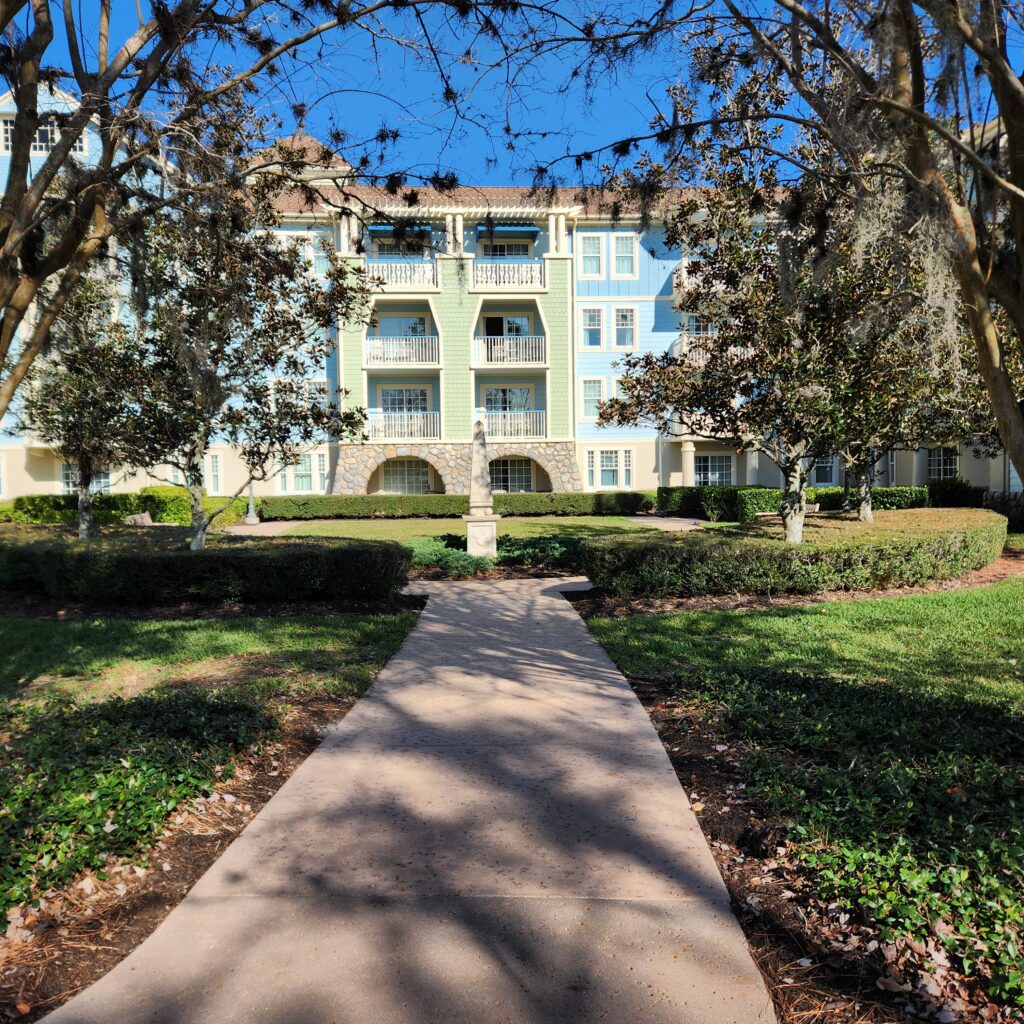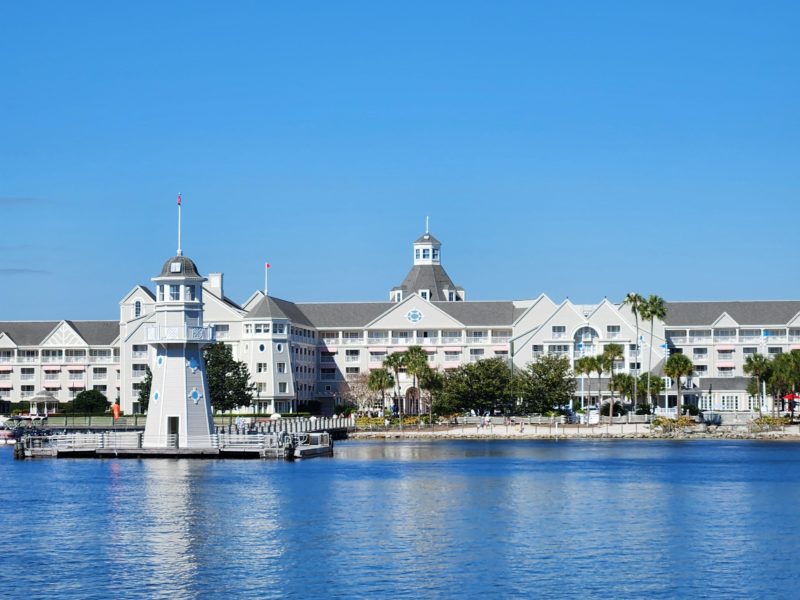This post is the second in the series all about Disney Vacation Club or DVC. The first post was a DVC overview and you should start there if you aren’t familiar with the product. In this post we’ll dive into the costs associated with Disney Vacation Club. While it’s not an investment and should not be viewed as such, it absolutely can provide significant savings for the right kind of Disney traveler.
There are two main costs with DVC, the initial up front costs to purchase points and yearly maintenance fees to keep the resort up to that Disney standard. Maintenance fees are per point and all owners for that resort must pay them. Though the up front costs are the biggest one time outlay, the maintenance fees over time will represent a significantly higher cost. Each resort has it’s own cost per point to purchase and cost per point to maintain. As one might expect, maintenance fees generally increase year over year (5% is a reasonable assumed rate) since nothing ever gets cheaper.
Upfront Costs
There are two main ways to purchase a DVC contract – direct from Disney or on the secondary market. There is a very robust resale market for DVC which is one thing that sets it apart from other timeshares. The contracts hold their value quite well over time. That said, the prospective buyer can realize significant savings purchase through the resale market instead of directly from Disney. Let’s take a look at an example to give you more context.
Right now, you can purchase a contract at the Polynesian to stay either in the new tower or existing longhouses for $235 per point with a minimum of 150 points, which works out to $35,250. On the secondary market, a Polynesian contract is, on average, $160 per point at the time of this post. That works out to $24,000 for that same 150 point contract; a savings of $11,250 over buying direct. That’s quite the savings! So why would anyone buy direct from Disney? Well doing so gives you access to several perks that buying resale doesn’t provide. Some of the most popular perks are ability to purchase a special annual pass tier, special events and lounges open only to direct members, and discounts on dining, merchandise, and tours. You can find a direct comparison at Disney’s site here: direct vs resale. Note that direct member benefits are only available for contracts of 150 points or more.
Whether you go direct or resale, the upfront costs are significant. If you don’t have the cash on hand there are financing options available for both types of contracts. Interest rates will vary, but assuming a 10% rate probably isn’t far off when estimating total cost. That kind of interest rate isn’t something to take lightly. Using the same numbers for a 150 point Polynesian contract, and assuming a 10% down payment and 10 year repayment term the total cost becomes ~$50,000 if buying direct and ~$34,000 if buying resale!

Recurring Costs
Every DVC member has 1 recurring cost over the life of their contract, annual dues sometimes called maintenance fees. As mentioned previously these will vary by resort and the quoted cost is per point. Most Walt Disney World DVC resorts will be around the $8-10 per point range. Below is a table showing the cost of dues for each DVC resort and the year over year percent change from 2024.
| Resort | 2025 Annual Dues (per point) | Change from 2024 |
| Animal Kingdom | $9.64 | 6.2% |
| Aulani | $10.12 | 3.7% |
| Bay Lake Tower | $8.02 | 5.6% |
| Beach Club | $9.12 | 5.7% |
| Boardwalk | $9.06 | 4.5% |
| Boulder Ridge | $9.19 | 5.9% |
| Cabins at Fort Wilderness | $11.88 | -2.3% |
| Copper Creek | $8.49 | 4.9% |
| Disneyland Hotel | $9.82 | 3.0% |
| Grand Californian | $8.80 | 2.8% |
| Grand Floridian | $7.93 | 4.7% |
| Hilton Head | $11.92 | 5.4% |
| Old Key West | $10.51 | 6.5% |
| Polynesian | $7.93 | -3.7% |
| Riviera Resort | $9.06 | 2.3% |
| Saratoga Springs | $8.54 | 3.2% |
| Vero Beach | $14.30 | 3.2% |
A couple things to note. First, the very obvious, annual dues generally go up over time. The 2 resorts showing discounts just completed significant expansions this past year and maintenance needs are low. Second, the dues at the resorts outside of Walt Disney World and Disneyland have much higher dues. Folks new to DVC will often see the extremely low upfront costs to purchase at Vero Beach or Hilton Head without realizing they are committing to paying some very high dues each year. If you love those resorts, then by all means go ahead and purchase there. If you’re looking for lowest cost resorts however, pay close attention to the annual dues. These will have a greater effect on overall cost of ownership over time than the upfront costs.
Cost Savings
We’ve seen that Disney Vacation Club requires a significant cost both up front and over time. So why do it? The reason is that there can be significant cost savings to be had at stays at Deluxe resorts using DVC points. Let’s look at an example.
We’ll use the example 150 pt contract and we’ll assume that we’re buying resale. If you’re buying DVC to save money on your regular Disney Vacations, you’re most likely going to find resale as the best option for you. You can still realize savings buying direct, but as you’ll see it does extend the timeline to realize those savings by a fairly significant amount of time.
A 150 point contract would cost ~160 per point or a total of $24,000. Generally, the buy will pay dues for the upcoming use year if those points haven’t been allocated already, that would be $1190 or 150 points * $7.93 annual dues for 2025. And since this is a real estate transaction there are closing costs. These costs can vary slightly but one resale site quoted them at $940 for a similar contract, so we’ll use that for our purposes. That brings the all in initial costs to $24,000 + $1190 + $940 or $26,130.
So this DVC member would start to realize long term savings only after they have saved more than that initial outlay. How long would that take? Well this is where the numbers can get fuzzy. That’s because what you actually pay for a room at deluxe resort is rarely the quoted price. Disney, at least recently, is almost always running a discount on rooms for example. There is also the ability to rent DVC points from another member, often at a significant discount to the rake rate (we’ll cover that in another post.) Additionally, the cost of rooms only increases over time as does the annual dues for DVC points. So we’ll be trying to hit a moving target while making some assumptions.
For the scenarios below I’m going to assume that room prices and annual dues increase by roughly the same amount each year so we don’t have to account for different rates of cost inflation there.
Scenario 1 – The typical Disney World visitor
The typical Disney World visitor is going to book their room through the Disney website or a Disney travel agent. They’ll be charged the going rate for the room. As we mentioned before, the Walt Disney company has been offering some decent discounts over the past couple years. When Disney offers discounts they are bigger for deluxe resorts than moderate or value resorts. Usually at least 25% up to 35%. We’ll split the difference and assume the average Disney guest can find a 30% discount on Deluxe resorts.
The average rack rate for a room at Disney’s Polynesian Resort varies wildly by roomy type and time of year. We’re going to use a rack rate of $800 for our calculations, assuming a standard room. That means a week at the Polynesian would cost $5600. This estimates includes taxes.
If we assume a 30% discount to the above price, that brings the weekly cost to $3920 when paying out of pocket.
Now on the DVC side, we’re going to make an assumption that the 150 pts covers the same week. In reality, the amount of points needed to stay in a standard studio at the Polynesian is going to 104 – 242 pts for the week. 242 is a huge outlier though and represents the weeks of Christmas to New Years and the most popular Spring Break week. If you toss that one, the next highest weekly rate is 181, so 150 is completely reasonable. For context, the rack rate during these weeks for a standard room at the Polynesian are north of $1200! So everything will kind of scale together.
Assuming the 150 points covers a week means that the cost of a week long stay using DVC points is equivalent to the cost of annual dues for that year. In our example that’s $1190.
So the “typical” Disney guest could realize savings of $3920 – $1190, or $2730 yearly! That’s a huge savings year over year. Of course, the DVC owner in our example had to shell out $26,130 to get those 150 DVC points. That means it would take 10 years of stays to recoup the initial cost, after which time the savings would be real money back into their pocket. Not too shabby.
Scenario 2 – Renting DVC points
As I’ve mentioned a couple times, there is a robust rental market for DVC points. It’s actually part of the reason why DVC is a better value than a typical timeshare. Even if you can’t or don’t want to use your points that year, you can rent them out to other guests to use at a decent premium to your annual dues cost.
As a consumer of rental points you can expect to pay $20-22 per point by going through one of the trusted rental brokers. I would always recommend using a broker with a long track record if going this route. There are ways to realize cheaper rental prices such as renting directly from the DVC member, but they come with much greater risk.
For that same 150 point week long stay it would cost approximately $21 * 150 or $3150. That’s a roughly $800 savings off the Disney discount price alone – highlighting how DVC can offer savings even for non-members! However, compared to the member rate of $1190, that’s still $1960 more. It would take the points renter. It would take this person 14 years of visits to recoup the initial expense, after which point that $1960 is real money to use elsewhere.

Summary
As you can see, becoming a DVC member offers the opportunity for significant savings on Disney vacations. It’s not a no brainer decision though. It requires a significant up front investment or that the buyer take out a loan and finance the up front costs.
Both of those options come at a cost. Even if you do that the cash on hand, that means that cash isn’t being deployed elsewhere. Right now, in 2025, it’s trivial to find a bank paying 3.75% interest on savings accounts. So that money could be growing at a minimum of 3.75% for you instead of Disney – this is a concept called the time value of money. A dollar today is worth more than a dollar tomorrow, or in 10 years. That needs to be considered.
Taking out a loan makes the math even worse. At that point, the prospective buyer should no longer consider buying DVC as a financial investment of any kinds and look at it as a purely discretionary purchase.
There are other considerations to take into account to decide if DVC is right for you – how often you travel, how often you plan to travel, what kinds of resorts you like to stay at. The answers to these questions are personal and can’t be accounted for in a mathematical model easily. They are they very important to the question of if DVC is right for you and something I’ll cover in a future post. For the right kind of guest though, DVC represents potential for a huge savings over time on beloved Disney vacations.


